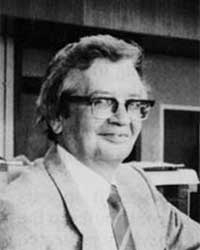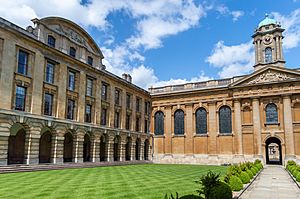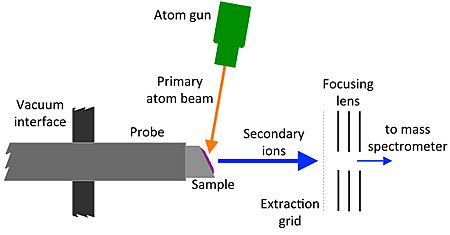Michael Barber (chemist) facts for kids
Quick facts for kids
Michael Barber
|
|
|---|---|
 |
|
| Born | 3 November 1934 Newton, Greater Manchester, England
|
| Died | 8 May 1991 (aged 56) |
| Other names | Micky |
| Alma mater | Manchester Grammar School, Queen's College, Oxford |
| Known for | Fast atom bombardment |
| Spouse(s) | Joan Barber (m. 1958; died 1991) |
| Children | 3 |
| Scientific career | |
| Fields | Chemistry, mass spectrometry |
| Doctoral advisor | John Wilfrid Linnett |
Michael (Mickey) Barber (3 November 1934 – 8 May 1991) was a British chemist and expert in mass spectrometry. He is best known for inventing a special method called fast atom bombardment (FAB) ionization. This invention greatly helped scientists study different molecules.
Contents
Early Life and Education
Michael Barber was born on November 3, 1934, in Newton, Greater Manchester, England. His family came from a modest background. He had one older brother, Peter. His father, Joseph Barber, worked as a carpenter.
Michael attended Manchester Grammar School. After that, he went to the Queen's College, Oxford. He earned his first degree in 1958 and another science degree in 1959. While at Oxford, he worked with a scientist named Jack Linnett. Together, they designed and built a special machine called a mass spectrometer. This machine was used to study flames. In 1958, Michael married Joan Gaskell, and they had three children.
Career and Discoveries
In 1961, Michael Barber returned to Manchester. He started working at the Scientific Instruments division of Associated Electrical Industries. There, he and Martin Elliott developed new ways to study how ions break apart using a mass spectrometer. They also began working on a technique called X-ray photoelectron spectroscopy.
In 1973, he became a lecturer at UMIST (University of Manchester Institute of Science and Technology). He was promoted to a full professor in 1985. In the same year, he was also chosen to be a Fellow of the Royal Society. This is a very high honor for scientists in the United Kingdom. He continued to work in Manchester until he passed away.
What is Fast Atom Bombardment?
Fast atom bombardment (FAB) is a clever method used in mass spectrometry. It helps scientists turn molecules into ions so they can be studied. Imagine a beam of very fast-moving atoms hitting a surface. This energy can break apart delicate organic molecules.
Michael Barber realized that if you mixed the substance you wanted to study with a special liquid, like glycerol, it would protect the molecules. This "protecting liquid" is called a "matrix." It allowed even large molecules, up to 10,000 times the mass of a hydrogen atom, to be turned into ions and detected. This idea of using a protecting matrix was later used in another important technique called matrix-assisted laser desorption ionization. Michael Barber and his team used the FAB method for early experiments to figure out the order of building blocks in peptides.
Awards and Recognition
Michael Barber received several important awards for his work:
- Royal Society of Chemistry Award for analytical chemistry and instrumentation (1979)
- Fellow of the Royal Society (1985)
- American Society for Mass Spectrometry – The Distinguished Contribution in Mass Spectrometry Award (1991)
The Michael Barber Centre for Collaborative Mass Spectrometry at the University of Manchester is named in his honor. It continues his legacy in the field of mass spectrometry.



